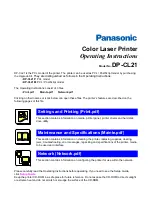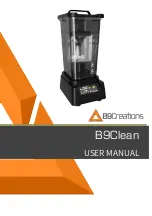
38
06 Printing optimization
When bioprinting with the Thermoplastic Printhead, the print surface, nozzle diameter and
pressure source all affect material extrusion.
We recommend using glass as a print surface. Glass adheres to thermoplastic filament more
than a plastic surface does. Commonly used plastic surfaces risk melting from contact with the
nozzle. Also, the printed filament may be thermally bound to the plastic piece, making removal
difficult. To improve surface adhesion, if material allows sterilization post-printing, cover the
print surface using textured tape (i.e. painter’s tape) instead of a Petri dish. Keep in mind
tape residue can affect seeded cells. Depending on the material used in the Thermoplastic
Printhead, the printbed may have to be heated to facilitate attachment and mitigate
contraction during the cooling process.
We recommend using a layer height that is smaller than the nozzle diameter to improve
the thermoplastic material’s adhesion to the surface of each layer. Consider adding a pause
between bioprinting each layer to enable the deposited filament to cool. If the deposited
polymer is not cooled, it may deform due to printhead movement. The printed construct may
also contract as it cools. Further optimization may be necessary to account for this.
We recommend using an external pressure source when printing with the Thermoplastic
Printhead. This is due to the high viscosities of the melted thermoplastic that may require
pressures beyond those provided by the internal pump and air reservoir. Please contact
[email protected] so we can provide you with the proper solution regarding an external
pump or using your building’s air supply. It is necessary to ensure that a secondary regulator
is placed between the external air supply and the system to protect the valves from pressure
Summary of Contents for BIO X
Page 1: ...BIO X Thermoplastic Printhead User Manual...
Page 2: ......
Page 4: ......
Page 5: ...1 Package contents 01...
Page 7: ...3 Technical specifications 02...
Page 11: ...7 Safety information 03...
Page 14: ...10...
Page 15: ...11 Getting started 04...
Page 25: ...21 04 Getting started Figure 8 Loading the Thermoplastic Print head with granulate A B C...
Page 37: ...33 Cleaning 05...
Page 40: ...36...
Page 41: ...37 Printing optimization 06...
Page 44: ...40...
Page 45: ...41 Relevant G code commands 07...
Page 48: ...44...
Page 49: ...45 Frequently asked questions 08...
Page 54: ...50...
Page 55: ...51 Maintenance 09...
Page 57: ...53 Appendix A Consumables...
Page 60: ...www cellink com...
















































